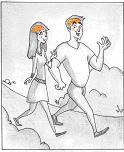The NSAID Myth (Part 2): It?s not the only solution ...other long-term options
Reference:Kawanishi N, Yano H, Yokogawa Y, Suzuki K. Exercise training inhibits inflammation in adipose tissue via both suppression of macrophage infiltration and acceleration of phenotypic switching from M1 to M2 macrophages in high-fat-diet-induced obese mice. Exerc Immunol Rev. 2010;16:105-18.
Herder C, et al Anti-inflammatory effect of lifestyle changes in the Finnish Diabetes Prevention Study. Diabetologia. 2009 Mar;52(3):433-42. Epub 2009 Jan 8.
Bastard JP, et al Recent advances in the relationship between obesity, inflammation, and insulin resistance. Eur Cytokine Netw. 2006 Mar;17(1):4-12. Black PH, Garbutt LD. Stress, inflammation and cardiovascular disease. J Psychosom Res. 2002 Jan;52(1):1-23.
Black PH. The inflammatory consequences of psychologic stress: relationship to insulin resistance, obesity, atherosclerosis and diabetes mellitus, type II. Med Hypotheses. 2006;67(4):879-91. Epub 2006 Jun 15.
Due to amazing multibillion dollar marketing strategies, NSAIDs have become basically known as the ?best?, fastest and easiest solution to acute and chronic inflammatory conditions. Please don?t get me wrong, of course every drug has its place, but it seems like the prescription of NSAIDs in particular has gone out of control! What other less risky evidence-based options are there? Firstly, there is growing evidence, that EXERCISE and PHYSICAL ACTIVITY have anti-inflammatory benefits. Of course it would have to be the right exercise or activity that would not flare up the patient.
Who better than Physical Therapists to figure out what regular DAILY exercise a patient may safely perform? It is also our job to motivate and convince the patient that the long term solution to their knee OA pain / inflammation or multiple joint pain, or myofascial pain is DAILY exercise!
A large 2009 study from Finland concluded that increases in fibre intake and moderate to vigorous leisure time physical activity predicted decreases in C-reactive protein levels (representing sub-clinical inflammation). E.g. just a 30-minute daily brisk walk
There is strong evidence that adipose tissue is the greatest contributor to inflammatory reaction in the body. This 2010 study (although on mice) concluded,“Chronic exercise contributes to inhibit inflammation in adipose tissue…”
There are dozens of studies associating lack of exercise / activity, fat cells, insulin resistance and inflammation!
Since we’re talking about insulin, we could not possibly ignore the influence of dietary sugar or high glycemic index foods on inflammation. (More on this in the Part 3 of this NSAID report.)
Lastly let?s not forget the negative contribution of chronic stress to inflammation. A 2006 review article provides evidence that repeated episodes of acute and chronic psychological stress may induce a chronic inflammatory process. Think of it, how many of our patients with persistent inflammation who chronically rely on NSAIDs also have post MVA stress, dealing with workers compensation, extreme job dissatisfaction, dealing with lawyers, dealing with financial stresses?
Honestly, do we really believe that a person 6 months post injury could still have inflammatory agents in their tissues remaining from their original soft tissue injury?
Obviously chronic stress must be explained to the patient and addressed. Taking an NSAID is so easy but does absolutely nothing to the reason why the inflammatory mechanisms are persisting …lack of physical activity and chronic stress!
Posted on: November 22, 2010
Categories: Modalities / Meds / Supplements


